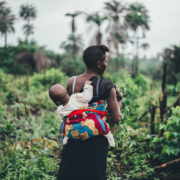The Need for Gender-Responsive Approaches to Climate Adaptation
Study after study has highlighted how climate change affects women and girls more adversely, and in different ways, than it affects men and boys. Fewer studies, however, explore the impact of climate change on gender roles. Furthermore, approaches to climate adaptation need to better reflect the growing potential for changes to traditional gender roles due to climate change.
Climate adaptation “refers to actions that reduce the negative impact of climate change, while taking advantage of potential new opportunities.” Adaptation planning can help in managing the impacts of climate change on gender roles in Indigenous communities while shifting away from victimizing Indigenous populations. Instead the focus is on how “community assets and strengths could help to motivate and sustain climate action.” Incorporating a gender-responsive approach to climate adaptation would offer insights into how Indigenous communities are adapting traditional gender roles to climate change, and possibly shifting them in new ways.
An analysis of food systems and food insecurity is one place to start when considering climate adaptation and gender roles. An example of adapting women’s traditional roles in food preparation with community-based education and economic sustainability is the Inuvialuit Community Economic Development Organization (ICEDO) educational program and training facility centred on country food processing. The ICEDO courses teach aspects of “value-added processing” of country foods, including char, muskox, and moose, to show how to make the best use of “portions of meat that are often discarded” and instructs participants in developing “the knowledge and skills required to maximize the commercial viability” of these foods. These educational programs address food insecurity which is especially prevalent in Arctic communities due to the effects of climate change, including earlier melting of winter snowfall.
The call for gender-sensitive responses to the effects of climate change is not new. However, when gender is considered in relation to climate change adaptation and Indigenous peoples, as in the previous example, it remains focused heavily on normative gender binaries, of male and female, and traditional gender roles held by men and women. Experiences of discrimination of people who identify as being from 2SLGBTQQIA+ populations, often prevent them from accessing the supports that could assist them to manage adverse climate effects, including health impacts.
A gender-responsive approach to climate change adaptation would be a step beyond gender-sensitivity, and could more effectively include gender diversity and appreciate the impact of climate change on changing gender roles. A gender-responsive approach would hold the potential to break through conventional approaches to gender analysis that are limited by gender binaries and could recognize how different people experience the impacts of climate change in diverse ways. In turn, services and supports could be designed with a better understanding of the answers to “who matters, who decides, and who benefits” while recognizing people in the way that they want to be recognized. More research is needed to better appreciate and understanding the impact of climate change on gender and changing gender roles due to the impacts of climate change.
By Leela Viswanathan
(Image Credit: Ives Ives, Unsplash)


 Annie Spratt
Annie Spratt

